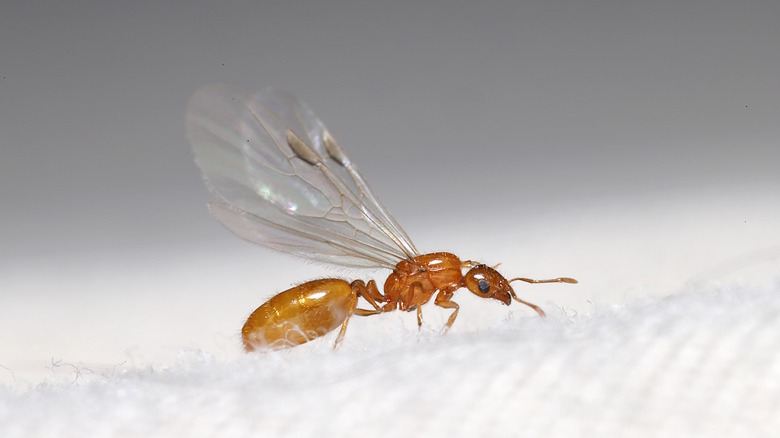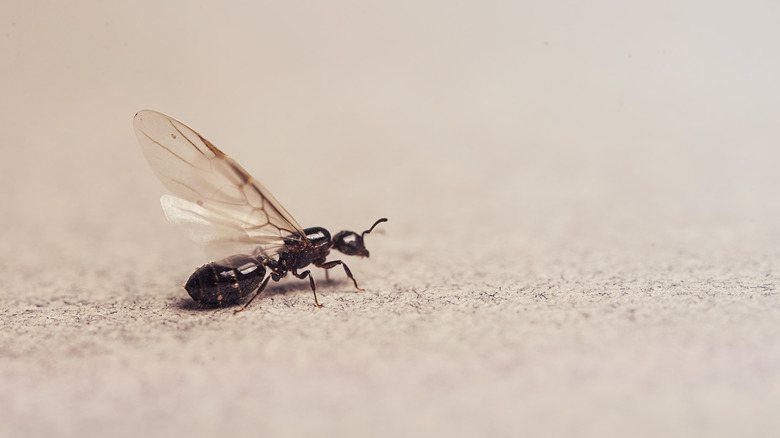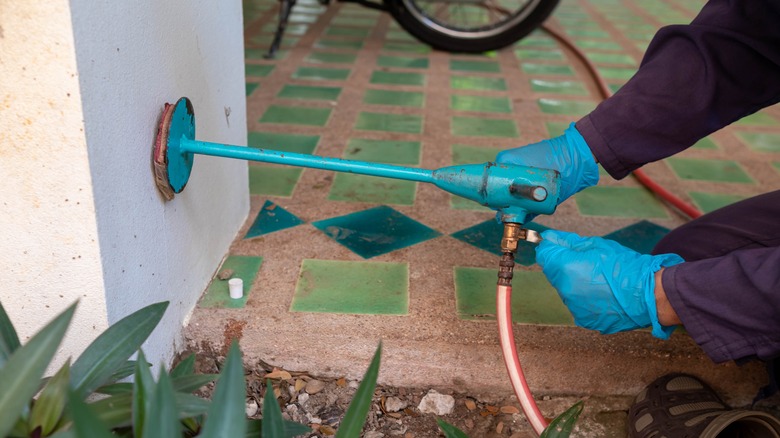Winged Ants Vs. Termites: Here's How To Tell The Difference So You Can Properly Treat The Problem
If you're dealing with a flying pest infestation, the first crucial step is identifying which type of insect it is — winged termites or flying ants. Although they may resemble each other at a quick glance, a closer inspection reveals several differences between winged termites and flying ants. Distinguishing between the two is vital because the course of action you take differs significantly depending on the species. Knowing their differences in physical appearance and behavior can save you time and money while eliminating unnecessary stress in the eradication process. Once you know what you're up against, you can choose the most effective treatment plan.
Starting with their appearance, winged termites, or alates as they're scientifically known, have a straight waist and straight antennae. Furthermore, their two pairs of wings are equal in length, with a wingspan of up to 4 inches. Flying ants, on the other hand, have a pinched waist, elbowed antennae, and two pairs of wings, of which the front pair is larger than the back pair. Also, while the wings of both insects might appear similar, those of a termite are fragile and can break off. Color can be another clue. Termites are usually light in color, often white, beige, or light brown, whereas ants are generally darker, ranging from brown to black. Your environment can also provide clues; termites tend to avoid light and are more likely to be found in dark, damp spaces, whereas ants are not as particular.
Behavior and home damage: more than just a nuisance
Identifying their behaviors can not only help differentiate between winged termites and flying ants but also inform your pest control strategy. The behavioral differences between the two are as pronounced as their physical ones. Winged termites are colony-formers; they are the reproductive members who leave their existing colonies to form new ones. These new colonies can, unfortunately, be inside your wooden structures, causing significant damage over time. Termites consume wood from the inside out, often going undetected until the damage becomes severe. This can lead to costly repairs and even structural failures if not addressed in time.
Flying ants, particularly carpenter ants, also pose a threat, although their impact is generally less severe than that of termites. Carpenter ants create tunnels in wood for nesting, but unlike termites, they don't consume the wood. However, if left untreated, they can weaken wooden structures and become a significant nuisance, especially when they forage for food in your home. Ants are also more likely to venture out, making their presence more noticeable but easier to treat. Both types of insects can multiply rapidly if not controlled, exacerbating the problem. Whether it's the silent but steady damage by termites or the more overt but less severe damage by ants, neither should be taken lightly.
Targeted solutions: how to effectively eliminate each pest
You've accurately identified the pest, and now it's time for action. If termites are the culprits, experts often recommend professional treatment due to the extensive damage these insects can inflict. Chemical termiticides are commonly used to treat infested areas. They not only work as a treatment but also create a protective barrier against future invasions. They usually contain active ingredients like fipronil, imidacloprid, or permethrin. To get rid of termites, many professionals also use baiting systems that contain slow-acting poison. The termites consume the bait and bring the poison back to their colony, gradually causing its collapse. It's a longer process but extremely effective for termite eradication.
If, on the other hand, you're dealing with flying ants, the approach is different, and you have more flexibility in treatment options. Over-the-counter baits and ant traps work well for minor infestations. These products are widely available and designed specifically for general ant species. However, when carpenter ants are involved, consider professional treatment. Experts have the tools and knowledge to locate the main nests and apply targeted treatments directly. The chemicals used for ant control are generally milder than those used against termites. If you prefer an eco-friendly approach, consider using natural alternatives like diatomaceous earth or boric acid, which have proven effective.


